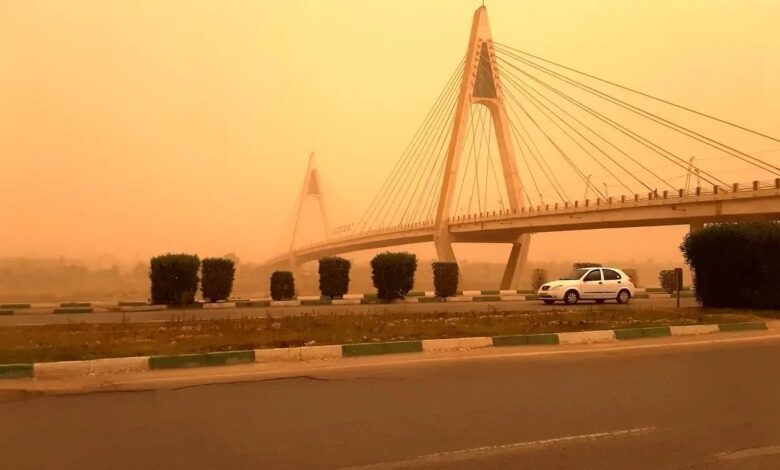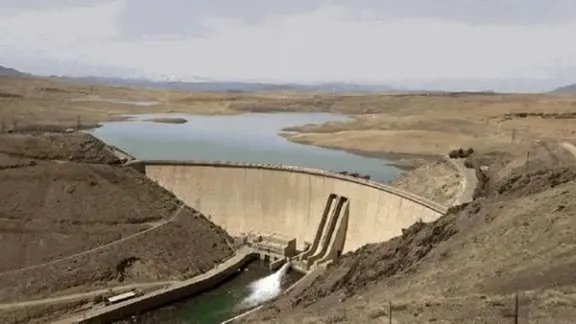
The General Directorate of Meteorology in Al-Ahwaz has reported a severe dust storm that has pushed air quality to hazardous levels, with pollutant particle concentrations in Al-Hamidiyah exceeding 26 times the permissible limit.
According to the National Air Quality Monitoring System, air in multiple cities—including Al-Ahwaz, Abadan, Al-Hamidiyah, Mahshahr, Al-Muhammarah, Ramshir, Al-Khafajiya, Al-Omidiya, Tustar, Hendijan, Dezful, and Al-Huweyzeh—was deemed unhealthy for all age groups on Friday, May 2.
Shahriar Askari, spokesperson for the Meteorological Directorate, confirmed that the concentration of pollutant particles in Al-Hamidiyah reached 4,004 micrograms per cubic meter, far above the acceptable limit of 150 micrograms. Other cities recorded similarly alarming levels: Abadan (1,258), Al-Muhammarah (1,002), Mahshahr (1,027), Al-Ahwaz (564), Al-Khafajiya (457), Al-Huweyzeh (495), Hendijan (329), and Dezful (262).
In response, the Environmental Protection Organization and the University of Medical Sciences in Al-Ahwaz have urged residents—especially the elderly, children, and those with heart or respiratory conditions—to avoid unnecessary outings and reduce physical activity to a minimum.
Last month, a dust storm originating from western regions disrupted public life across several areas, including Al-Ahwaz, Kermanshah, Lorestan, Bushehr, Ilam, and Zanjan. On April 17, all schools and universities in Al-Ahwaz shifted to remote learning, government offices went virtual, and suspended particles in the air reached up to 67 times the allowable limit.
With the recurrence of dust storms, citizens rushed to buy filtered face masks, drawing from past experiences.
The Crisis of Fine Particulates and Its Impact
Fine particulate pollution, particularly PM2.5, has gained increasing attention since the early 2000s. Its effects are most severe in western Iran, especially in Al-Ahwaz, where it has led to rising cases of asthma, bronchitis, and cardiovascular diseases.
Root Causes of the Crisis
Iraq’s deserts are believed to be the source of approximately 55% of the fine particles affecting Iran. Desertified lands in the Tigris and Euphrates basins, worsened by drought, generate large amounts of dust that are carried by seasonal winds into western Iran each year.
Additionally, unsustainable practices like dam construction, excessive groundwater extraction in eastern Syria and northern Saudi Arabia, and poor domestic management have intensified the crisis. Key hotspots in Al-Ahwaz—spanning 350,000 hectares—along with the Sistan plain, the dried Hamoun wetlands, the Zayandeh Rud riverbed, and the Lut Desert have all become major sources of airborne dust.
Since 2001, the Iranian regime’s failure to engage in international cooperation—particularly with Iraq, Syria, and Turkey—has only worsened the situation, leaving western regions of the country to face an escalating environmental emergency year after year.


